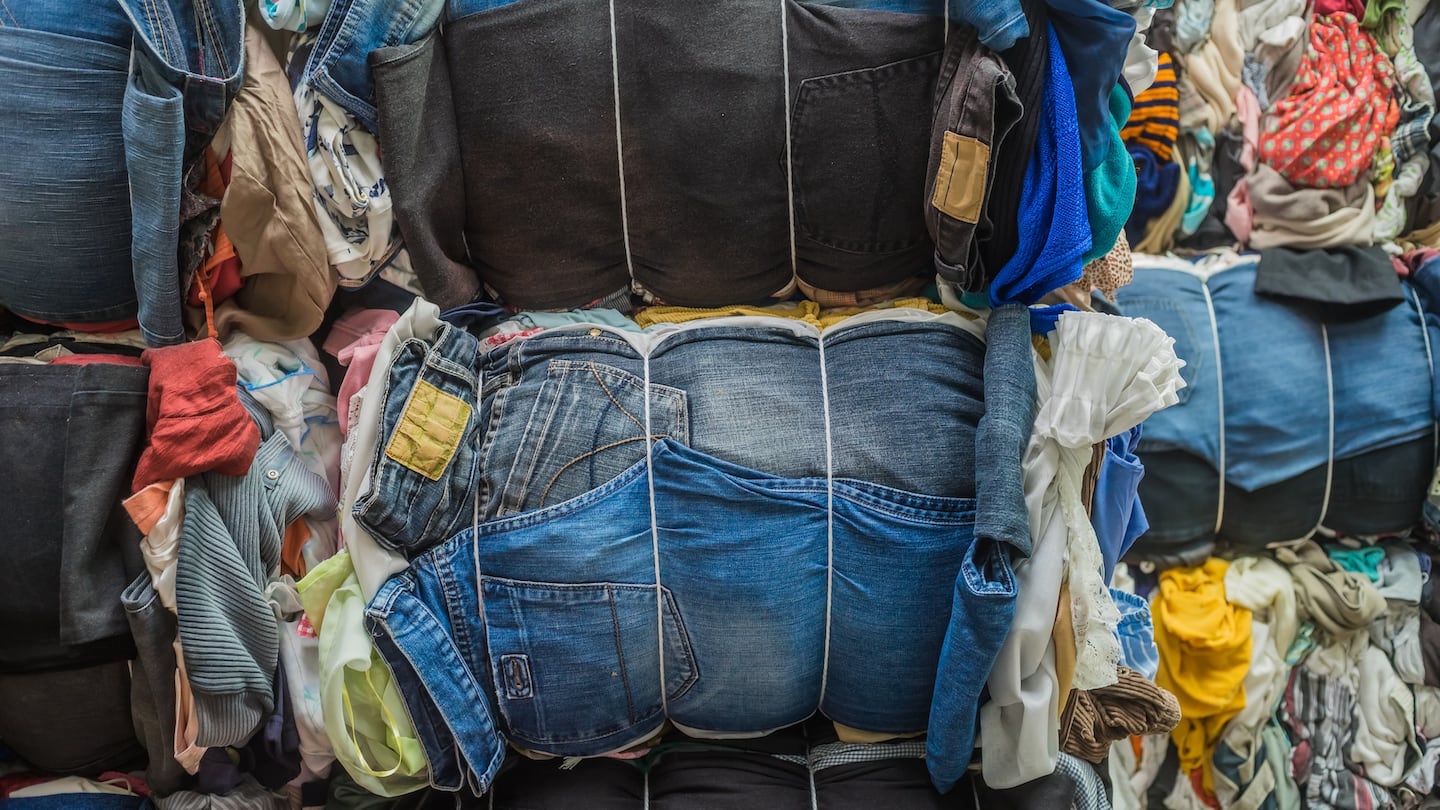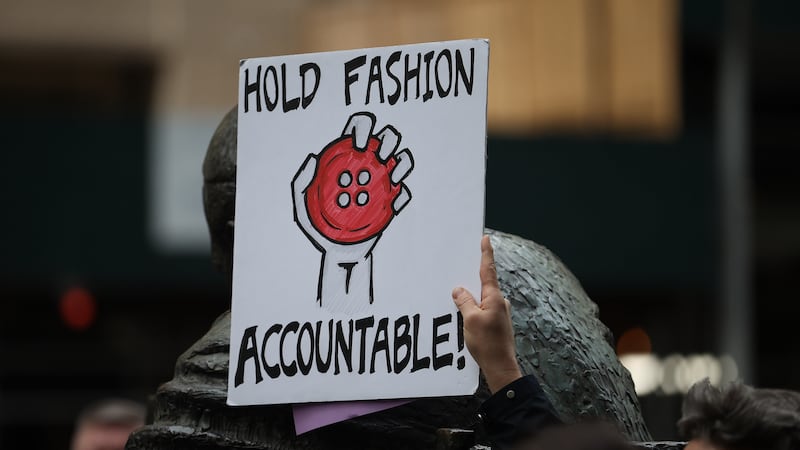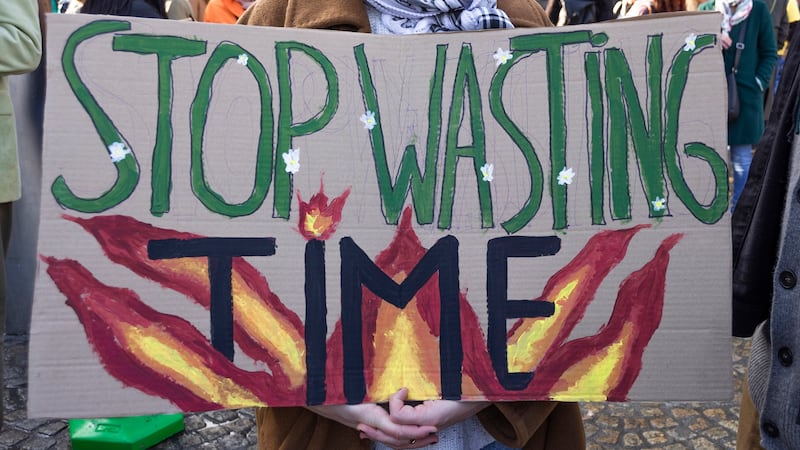Agenda-setting intelligence, analysis and advice for the global fashion community.
French engineering company Technip Energies has helped build some of the world’s most technically challenging fossil-fuel infrastructure, including platforms to pump natural gas out of Arctic waters and mega-scale oil refineries that transform crude into building blocks for plastics, like fashion industry mainstay polyester. But the company is eyeing new opportunities: over the next decade, it aims to become a leading player in fashion’s efforts to develop textile-to-textile recycling.
The move is part of a broader strategy, underway since Technip Energies was spun out from an oilfield services company in 2021, to position the business as an industrial powerhouse for a transition to greener energy systems. Though the company still generates a large proportion of its revenue from hydrocarbon projects, it’s looking at decarbonisation opportunities as a driver for future growth. It’s investing in carbon capture, green ammonia and hydrogen and biofuels. But it sees fashion as a potential high-value future flex.
Last year, it launched Reju, a “materials regeneration company” it’s betting could become a $2 billion business within a decade. “We throw away over 100 million tonnes of textiles every year. What the hell is that? It’s not smart,” said Reju CEO Patrik Frisk. “People don’t understand; they’re not doing the math.”
Fashion’s Plastic Problems
Reju is one among a flurry of businesses racing to bring new recycling technologies to commercial scale, an industrial bet that fashion’s climate commitments — many of which revolve around shifting to materials with a lower environmental impact — will give rise to a burgeoning market for recycled fibres.
ADVERTISEMENT
Early movers have not been rewarded. Textile-to-textile recycling pioneer Renewcell declared bankruptcy in February, as sales of its recycled cellulosic pulp lagged expectations. And despite big brands’ sustainability pledges, recycled polyester’s market share has remained more or less static since before the pandemic.
But deep-pocketed and far-sighted investors are still betting that the market will shift. Renewcell’s remaining assets were bought out of administration by private equity firm Altor in June. H&M Group and green industry investor Vargas Holding have raised close to $200 million to get Syre, a polyester recycler they launched earlier in the year, to commercial production in 2025. Meanwhile, companies from Gap Inc. to Sri Lankan manufacturing giant MAS have penned agreements with innovators to buy new recycled materials once they come to market.
Underpinning these moves is the belief that policymakers — under pressure to achieve their own climate objectives — will increasingly require companies to improve their environmental performance. The European Union has made developing a circular economy — one that prioritises recycling and reuse over destruction and disposal at the end of a product’s life — a central pillar of the Green Deal strategy that has shaped the bloc’s policymaking over the last four years.
Fashion is among the industries in its sights: the EU is moving to introduce a series of regulations that will make brands more responsible for what happens to old clothes at the end of their life and impose recycled content requirements, among other things. Across the Atlantic, California became the first state in the US to introduce a law that would make brands pay to clean up clothing waste earlier this year.
But the pace and direction of change is still far from certain, with a complex interplay of economic and political headwinds threatening to further set back already struggling climate efforts. Negotiations to establish the first legally binding UN treaty to curb plastic pollution fell apart last week when oil-producing countries led by Saudi Arabia and Russia blocked efforts to limit production.
A deal — which would have resulted in a global commitment to tackle plastic pollution similar to the Paris Agreement on climate — would have helped reinforce ambitions to develop more circular solutions for the fashion industry.
The sector contributes to plastic pollution through its use of packaging and textiles like polyester — a material whose low-cost and versatile properties has propelled it to dominate the textile market since the turn of the century. Increased production of cheap, synthetic clothing has also resulted in growing piles of textile waste, most of which ends up in landfill or burned. A study published in the journal Nature earlier this year estimated the industry accounts for around 14 percent of all plastic pollution.
Critics warn recycling should not be seen as a silver bullet solution. The process carries its own environmental impact and, whether recycled or virgin, plastic products still shed micro-scale particles that pollute waterways and food systems. Recyclers argue they’re looking to improve markets too entrenched to ever really go away.
ADVERTISEMENT
“We’re not going to rid ourselves of polyester; we’re just hooked on this stuff,” said Frisk.
The Path to $2 Billion
Reju’s path to $2 billion is still far from certain. The market for new materials has so far proved fragile, with innovations struggling to compete with the price, scale and supply-chain efficiency commanded by conventional options.
Frisk doesn’t deny the challenges. Beyond the investment required to bring new textile recycling technologies to scale, there’s a whole ecosystem that still needs to be developed to divert old clothes from landfills and turn them into feedstock.
“This is a new product on a new system…it will be much more expensive and anyone who tells you different is dreaming,” said Frisk. But he’s also confident that the infrastructure will develop in time and that Technip Energies’ deep pockets, long-term outlook and expertise delivering complex engineering projects will ultimately set Reju up to win.
The business was spun out of a joint venture between Technip Energies, IBM and Under Armour, where Frisk was previously CEO. It’s based on a chemical recycling process developed by IBM that’s capable of processing mixed waste into a raw ingredient, which can in turn be fed back into the system to produce high-quality polyester pellets. Though the process requires high temperatures, according to Reju it generates half the emissions that producing virgin polyester would.
Earlier this year, the company began production at a 1,000-tonne plant in Germany. It’s aiming to make final investment decisions on construction of two industrial scale plants by the end of next year. The goal is to have sites in Europe and the US capable of producing around 100,000 tonnes of recycled polyester by 2028.
“The only recycled polyester we’ve had is from bottles, and that’s not upcycling or regenerating. You’re downcycling, and you have to add virgin plastic to the mix, so by the end of the process you won’t get a great product,” said Frisk. “The consumer won’t pay for a green product, but they’ll pay for a better product.”





